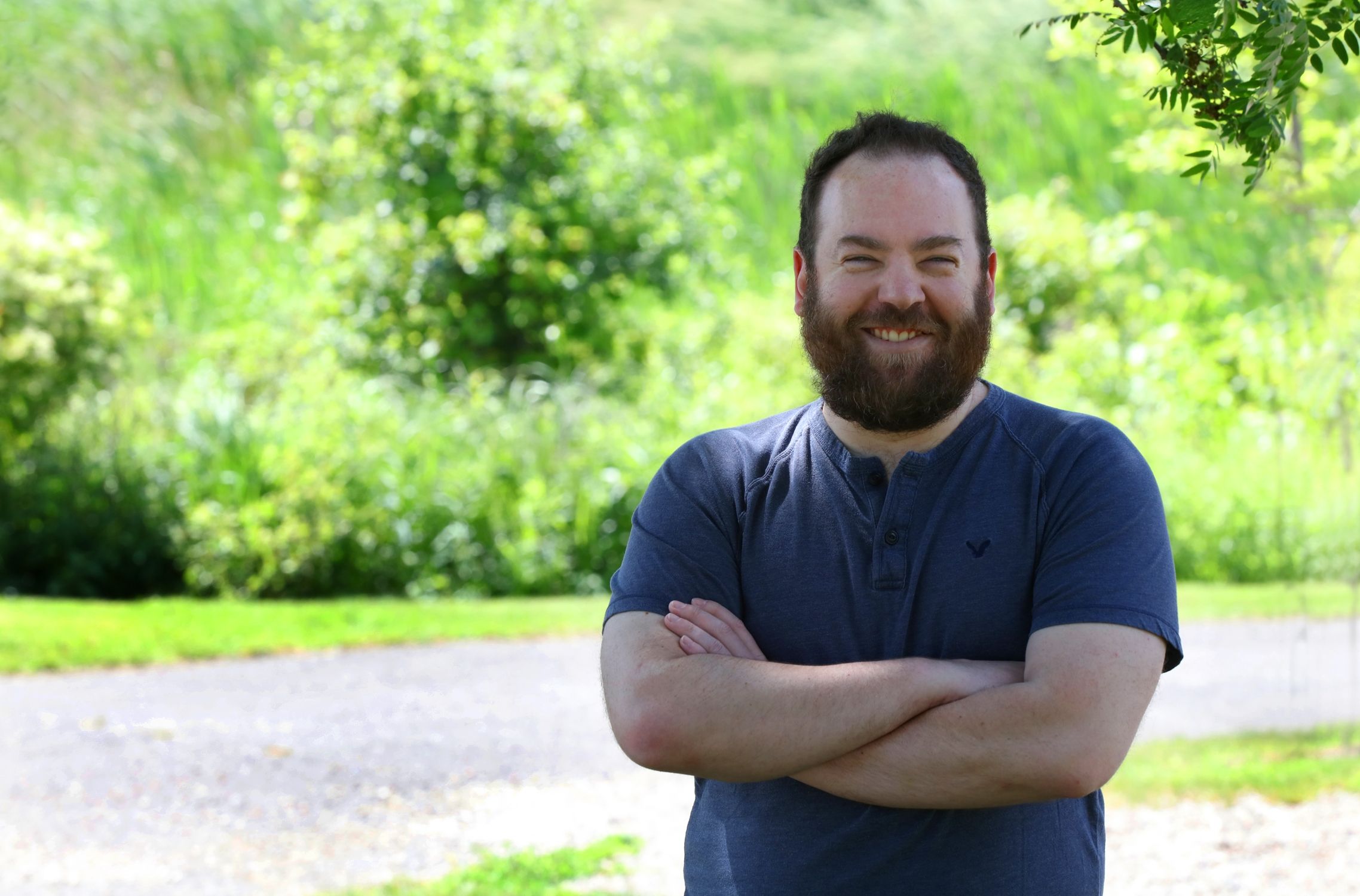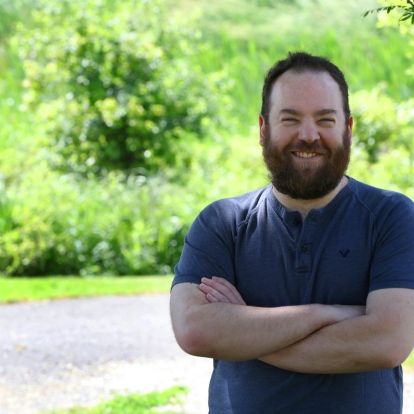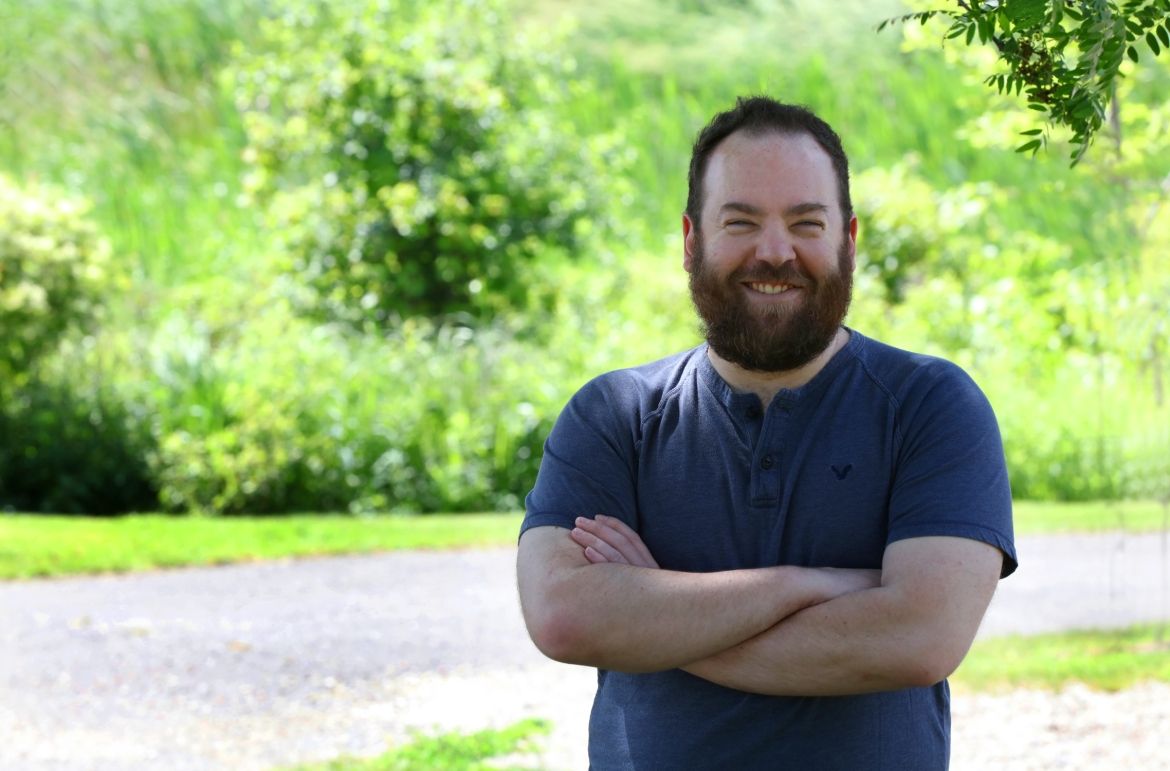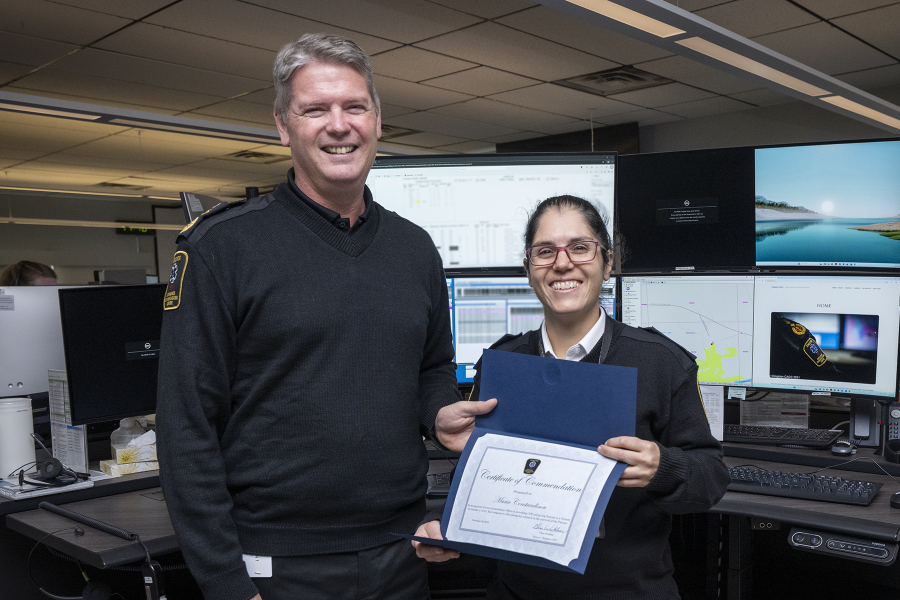Effective immediately masking is required for everyone when present on all inpatient units, in the Emergency Department (ED), the Urgent Care Centre (UCC), and the Children’s Outpatient Centre (COPC).

Former NHL player Mario Lemieux once said, “Every day is a great day for hockey.”
November 27, 2021, was no exception for 31-year-old Brandon Blaskie, a goalie, who had travelled from Perth to Kingston to play a game of hockey. Partway through, he suffered a stroke.
“I started to feel dizzy so I left the ice, and as I was leaving the arena I noticed I was veering to the left while walking and it seemed to be getting worse every 30 seconds,” says Blaskie.
Blaskie knew the common signs – a drooping face, can’t raise your arms and slurred or jumbled speech – but he wasn’t experiencing any of them yet, so he didn’t think he was having a stroke.
Luckily, he was minutes away from the hospital and decided to go to the Emergency Department (ED) at Kingston Health Sciences Centre’s (KHSC) Kingston General Hospital site, also home to the Regional Stroke Centre of southeastern Ontario. His symptoms came on fast and were getting worse.
Within an hour of first becoming dizzy during the game, he received a CT scan that confirmed his diagnosis. He was given the clot-busting drug tPA – a therapy that can stop a stroke in its tracks when received within hours of a stroke’s onset.
Of the 47 Ontario hospitals that provide tPA treatment, only KHSC has ever achieved the door-to-needle target time, for patients to receive the drug within 30 minutes of arrival. KHSC has done so consistently for several years, as reported in the December 2021 Auditor General of Ontario’s audit on cardiac disease and stroke treatment.
Every minute counts when someone is experiencing a stroke, and the faster that blood and oxygen circulation can be restored, the greater the chances of recovery. That’s because when a blood vessel to the brain bursts or is blocked by a blood clot, it causes brain cells to die from a lack of oxygen.
It’s important to call 9-1-1 because paramedics know how stroke care is coordinated in the region and will make sure you get to the right location for the right care as quickly and safely as possible.
Watch this video of Dr. Jalini explaining why it is important to act FAST.
Even when the timing is right, there are risks involved with most medical treatments. The clot-busting drug worked to dissolve the clot in Blaskie’s brain, but small pieces of the clot broke off and travelled elsewhere, causing him to have a second stroke while he was back in the ED for observation.
“I remember wondering what was hitting my leg and then realizing that it was my own left arm, which had gone numb and over which I had no control,” says Blaskie.
As a Regional Stroke Centre, one of the first three pilot centres to be established in Ontario, KHSC has a stroke neurologist on call to treat patients 24/7. Blaskie’s stroke neurologist on call that day was Dr. Albert Jin.
After another CT scan to determine the exact location of the clot causing the second stroke, Dr. Jin recommended that Blaskie undergo a procedure called Endovascular Treatment (EVT). During an EVT, a patient’s groin is punctured to insert a small catheter, which is then navigated using special imaging equipment into the brain to attach to and remove the clot.
KHSC is one of 11 centres in the province to offer EVT and is the only hospital that has consistently met the target of puncturing a patient’s artery for the procedure within 60 minutes of arrival. KHSC has achieved this result for each year the target has been tracked by CorHealth Ontario, 2017 to 2021.
The next thing Blaskie remembers after consenting to receive EVT is waking up in the Intensive Care Unit. From there, he had an eight-day stay on the Kidd 7 stroke unit. His stay was longer than expected because he had uncontrollable hiccups for seven days straight that affected his ability to eat and drink, a rare occurrence after a stroke.
When the hiccups finally stopped and after Blaskie’s speech and language were assessed, he was happy to move along his road to recovery to Providence Care Hospital, where he received stroke rehabilitation to improve his walking and use of his left arm.
Thirteen days later, he was able to go home with the support he needed to further his healing. Physiotherapy, occupational therapy and home care helped him improve and adapt to doing things differently.
Another NHL legend Scotty Bowman famously said, “I found out that if you are going to win games, you had better be ready to adapt.” The same could be said about 'the game of life.'
“I appreciate the teamwork that it took from all of my health-care providers to respond to my medical emergency and get me walking again without a walker and help me slowly improve how I use my left arm,” says Blaskie.
Dr. Jin says that the collaboration needed to succeed in stroke care in the region is similar to the teamwork needed to succeed in any team sport.
“We have well-designed, coordinated processes – or game plan – that include various KHSC departments, paramedic services, and other hospitals and health partners. We continue to work together to improve the plan with regular reviews of protocols and outcome data – that is a key success factor.”
June is Stroke Month. To learn about the early warning signs of a stroke, visit https://www.heartandstroke.ca/. To donate to KHSC’s stroke program and help support patients like Brandon, visit www.UHKF.ca.
Gallery


Brandon Blaskie had a stroke at 31 years old. He is back on his feet thanks to his decision to seek care quickly and to his care teams in hospital, rehabilitation and in the community.



